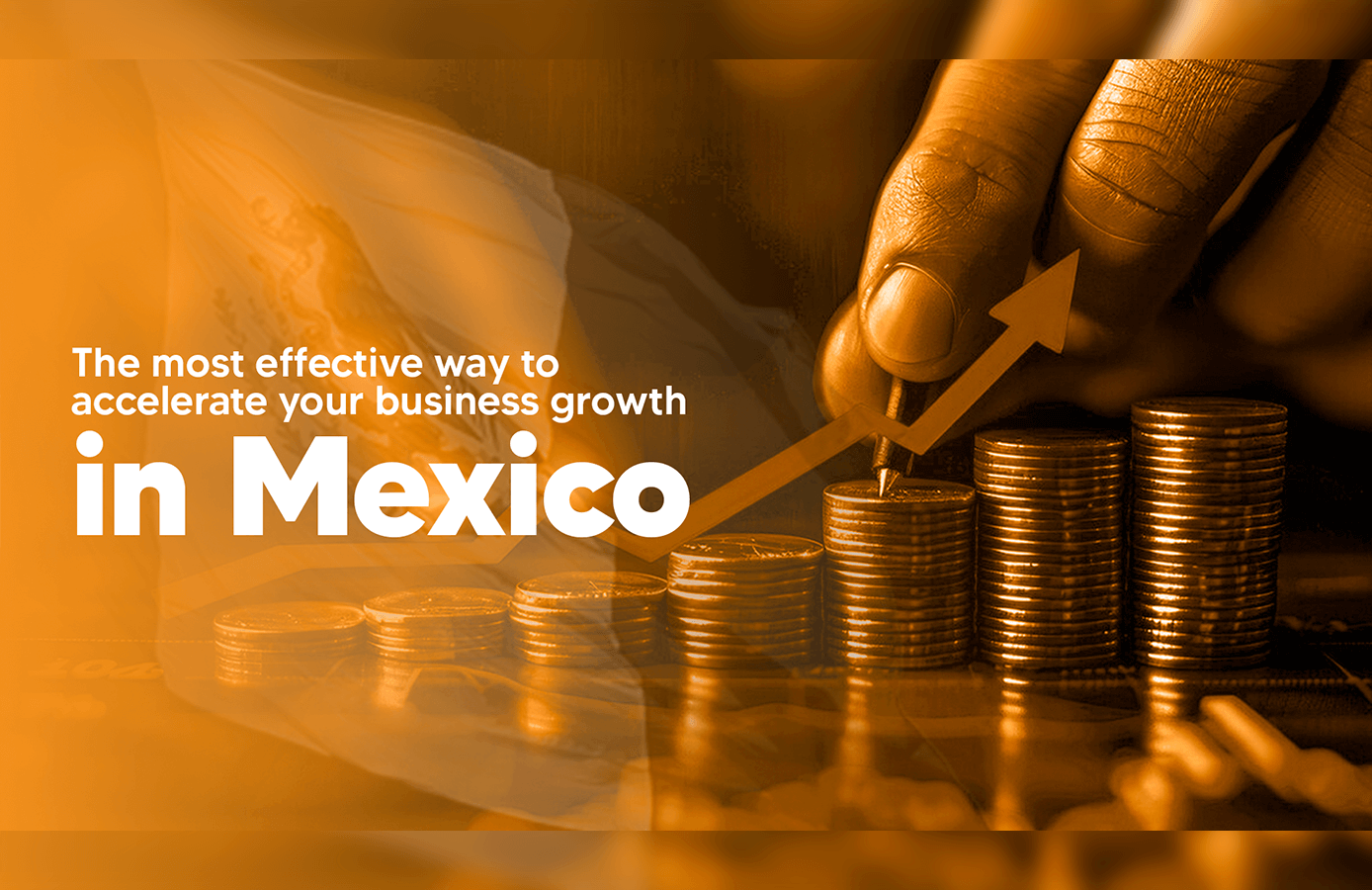Expanding into new markets is both a challenge and an opportunity. For businesses aiming to achieve sustained growth, Mexico offers a compelling case. With its stable economy, strategic location, and robust nearshoring opportunities, the country has emerged as a leading destination for foreign direct investment (FDI). This article explores why Mexico is an ideal choice for expanding operations and how the Build-Operate-Transfer (BOT) model can streamline this transition for your business.
1. Economic Stability: A Strong Foundation for Investment
Mexico stands out for its steady economic growth and consistent macroeconomic policies. The World Bank forecasts a 2.1% GDP growth for 2024, with inflation easing to manageable levels around 4.5%.
Currency Strength as a Confidence Signal: The Mexican peso has appreciated by 20% against the U.S. dollar between 2021 and 2024, signaling global investor confidence. Additionally, Mexico ranked as the 10th largest recipient of FDI globally, attracting over $35 billion USD in 2023 (UNCTAD).
Key Investor Advantages:
- Lower Operational Costs: Manufacturing wages range from $3.50 to $4.50 USD per hour, compared to $25 USD in the U.S., offering substantial savings.
- Infrastructure Growth: Projects like the Maya Train and expanded ports at Veracruz and Lázaro Cárdenas are enhancing logistics and connectivity across the nation.
2. Strategic Location: The Ideal Logistics Hub
Mexico’s geographic location is unparalleled. Sharing a 3,000-kilometer border with the U.S. and access to both the Atlantic and Pacific Oceans, it is a logistical gateway for global trade. According to ProMéxico, over 80% of Mexican exports are destined for the U.S. and Canada.
Trade Agreement Benefits:
- USMCA/T-MEC: Facilitates tariff-free trade across North America and strengthens supply chains for industries such as automotive, technology, and advanced manufacturing.
- Global Reach: With 13 free trade agreements spanning 50 countries, businesses operating in Mexico gain access to over 1.5 billion consumers worldwide.
3. Skilled Workforce: A Young, Dynamic Talent Pool
Mexico boasts one of the youngest labor forces in the Western Hemisphere, with an average age of 29 years. The country graduates over 120,000 engineers annually, equipping industries such as technology, manufacturing, and renewable energy with a steady stream of skilled professionals.
Key Innovation Clusters:
- Guadalajara: Known as “Mexico’s Silicon Valley,” home to global tech giants like Intel and Oracle.
- Monterrey: A hub for advanced manufacturing and industrial innovation.
Collaborative programs between the government and private sector have further enhanced workforce readiness, particularly in cutting-edge fields like artificial intelligence and sustainable energy.
4. Pro-Business Policies: A Supportive Regulatory Environment
Mexico has implemented numerous initiatives to make it easier for foreign businesses to operate within its borders.
Key Initiatives Include:
- IMMEX Program: Enables tax-free imports of raw materials for manufacturing destined for export, reducing production costs.
- Special Economic Zones: Offer additional tax incentives in high-growth potential regions.
5. Build-Operate-Transfer (BOT): A Winning Strategy for Expansion
The BOT model offers businesses a proven framework to establish and grow operations in Mexico. With this approach, companies partner with local experts to build and operate facilities, ultimately transferring full ownership once operational stability is achieved.
Why BOT?
- Risk Mitigation: Local partners handle regulatory, cultural, and administrative complexities, minimizing risks.
- Accelerated Market Entry: BOT allows for rapid deployment of operations without significant upfront investments.
Global companies like Tesla and General Motors have leveraged similar strategies, demonstrating the model’s effectiveness in the Mexican market.
6. Nearshoring: A Game-Changer for North American Businesses
Post-pandemic supply chain disruptions have accelerated the shift toward nearshoring. Deloitte reports that 42% of North American companies have moved or are considering moving operations to Mexico, compared to just 24% five years ago.
Advantages of Nearshoring in Mexico:
- Faster Deliveries: Products can reach the U.S. in under 48 hours, compared to weeks from Asia.
- Supply Chain Resilience: Shorter logistics chains are less susceptible to global disruptions, supporting just-in-time manufacturing.
7. Empowering Decisions with Business Intelligence (BI)
Data-driven decision-making is essential for successful expansion. BI tools help businesses analyze consumer behavior, regional trends, and operational performance, enabling more informed strategic choices.
Proven ROI of BI Adoption: According to Forrester, companies utilizing BI report a 27% improvement in operational efficiency and a 15% increase in ROI.
Conclusion: Mexico, Your Next Strategic Move
Mexico is more than a destination for investment—it’s a strategic partner for businesses seeking growth and efficiency. Its thriving economy, young and skilled workforce, and extensive trade networks make it an unparalleled choice for expansion.
By implementing strategies like nearshoring and leveraging the Build-Operate-Transfer (BOT) model, companies can achieve significant cost savings, reduce logistical complexities, and minimize risks. Whether you’re looking to streamline operations or tap into a dynamic consumer base, Mexico offers the resources and infrastructure needed for success.
📩 Ready to take your business to the next level?
Book a free strategy session with our CEO to design your expansion roadmap.
Explore how NearshoreInMexico can help you achieve seamless expansion into Mexico. Let us guide you toward a future of strategic growth and success.🌎
References:
- Forrester Research (2024). Business Intelligence in Emerging Markets. forrester.com
- World Bank (2024). Economic Outlook for Mexico. worldbank.org
- UNCTAD (2024). World Investment Report. unctad.org
- INEGI (2024). Key Economic Indicators. inegi.org.mx
- ProMéxico (2023). Mexico as an Investment Destination. promexico.mx
- Secretaría de Economía (2024). Trade Agreements Overview. gob.mx/se
- PwC (2024). Workforce and Competitiveness in Mexico. pwc.com
- Forbes (2024). Industrial Clusters in Mexico. forbes.com.mx
- Deloitte Insights (2024). Nearshoring Trends in North America. deloitte.com
- Tesla (2023). Expansion in Latin America. tesla.com




